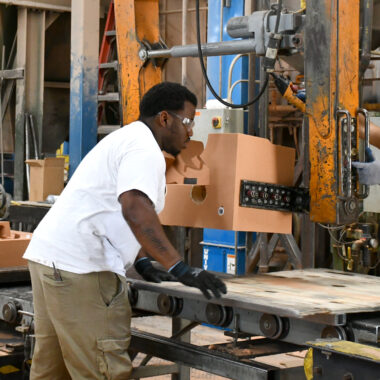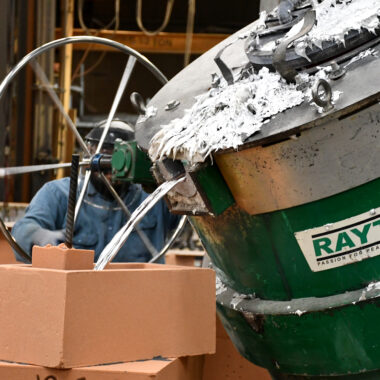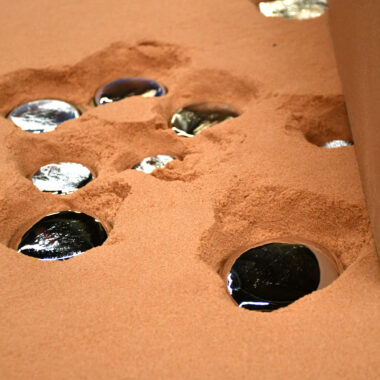Innovation in Aluminum Casting: Cutting-Edge Techniques for Modern Makers
What really sets these innovations apart are the lasting light weight aluminum alloys being established and the high-pressure die casting techniques that are changing the sector. Join us as we check out the forefront of light weight aluminum spreading development, where technology fulfills creative thinking to redefine what is possible in the globe of steel casting.

Advanced 3D Printing Methods
Making use of cutting-edge additive manufacturing procedures, progressed 3D printing techniques have reinvented the manufacturing of detailed and customized aluminum elements. By utilizing high-precision printers that can collaborate with light weight aluminum powders or filaments, manufacturers can create complicated geometries and styles that were formerly unattainable via typical production methods.
One of the essential advantages of sophisticated 3D printing in aluminum element production is the capability to accomplish lightweight yet resilient structures. This is especially useful in markets such as aerospace and vehicle, where weight decrease is important for boosting gas effectiveness and general performance. Additionally, the customization options offered by 3D printing enable the manufacturing of one-of-a-kind and customized parts that satisfy particular requirements, leading to boosted capability and efficiency.
Additionally, the efficiency of the 3D printing procedure decreases product waste and decreases the overall manufacturing time, making it a cost-efficient remedy for producing light weight aluminum parts. As technology remains to advance, the capacities of 3D printing in light weight aluminum production are anticipated to broaden, providing also higher possibilities for innovation in numerous markets.
Computer-Aided Layout Advancements
With the developments in advanced 3D printing methods for aluminum components, the assimilation of Computer-Aided Style (CAD) software program has become progressively critical in driving technology and effectiveness in the production process. CAD technologies have changed the method developers and engineers develop aluminum casting mold and mildews by providing specific digital modeling abilities. These software tools permit the creation of complex designs and simulations that enhance the spreading process, leading to better elements.
Among the key benefits of CAD in light weight aluminum spreading is the ability to discover possible issues early in the style stage, lowering costly errors and revamp throughout production. By mimicing the spreading procedure basically, designers can evaluate aspects such as cooling down prices, material flow, and structural stability prior to a physical mold and mildew is developed. This proactive method not only saves time and sources however additionally makes certain that the final aluminum components meet the preferred specs.
Additionally, CAD software program makes it possible for fast models and modifications to designs, facilitating rapid prototyping and customization to meet particular requirements. By leveraging CAD developments in aluminum casting, manufacturers can streamline their processes, improve item top quality, and remain at the center of advancement in the sector.
High-Pressure Die Casting Techniques
High-pressure die casting methods are extensively identified for their performance and precision in producing complex light weight aluminum parts. By using high pressure to force liquified light weight aluminum into elaborate molds at quick rates, this strategy allows for the development of comprehensive and dimensionally accurate components. Among the vital benefits of high-pressure die casting is its ability to generate get rid of thin walls and fine details, making it ideal for applications where light-weight yet strong components are essential.
The process starts with the preparation of the die, which is typically made from solidified tool steel and contains 2 halves that create the desired component shape. The molten light weight aluminum is then infused right into the die tooth cavity under high stress, guaranteeing that their explanation the product loads all the elaborate attributes of the mold. When the light weight aluminum solidifies, the die opens, disclosing the finished part prepared for any kind of required post-processing.
High-pressure die spreading is commonly utilized in different sectors, including automobile, aerospace, and electronic devices, where high-volume production of complicated light weight aluminum parts is required. casting aluminum illinois. Its capability browse around this site to provide limited resistances, excellent surface finishes, and cost-efficient production makes it a preferred option for contemporary makers intending to introduce in aluminum casting techniques
Sustainable Aluminum Alloys Advancement

One strategy to sustainable aluminum alloy growth includes including recycled aluminum material into the alloy structure. By making use of recycled aluminum, suppliers can reduce energy usage and greenhouse gas discharges linked with primary aluminum production. Additionally, reusing light weight aluminum assists draw away waste from land fills, adding to a more circular economic situation.
Additionally, scientists are discovering brand-new alloying elements and processing methods to boost the sustainability of aluminum alloys. By optimizing alloy structures and making procedures, it is feasible to enhance the recyclability, toughness, and total environmental performance of aluminum products.

Automation and Robotics Combination
In the realm of lasting aluminum alloys development, the assimilation of automation and robotics is reinventing manufacturing procedures, paving the means for boosted effectiveness and accuracy in manufacturing. Automation and robotics are streamlining typical casting strategies, using various advantages to developers in the light weight aluminum market. By including automation into the spreading process, recurring tasks that were as soon as labor-intensive can now be successfully dealt with by robot systems, decreasing the threat of human error and boosting overall efficiency.
Automated systems can function around the clock, making certain a continuous manufacturing cycle that minimizes downtime and makes best use of outcome. Robotics assimilation allows for complex layouts and complex mold and mildews to be produced with exceptional precision, meeting the demands of contemporary makers for premium light weight aluminum parts. Furthermore, making use of automation in casting procedures advertises a safer working environment by lessening the direct exposure of employees to hazardous conditions.
Final Thought
Advanced 3D printing methods, computer-aided layout developments, high-pressure die spreading techniques, lasting light weight aluminum alloys advancement, and automation and robotics combination have all added to the modernization of the casting procedure. The future of light weight aluminum spreading is intense with constant technology and click to investigate technical developments.
What truly establishes these innovations apart are the sustainable aluminum alloys being created and the high-pressure die casting strategies that are revolutionizing the industry. Join us as we discover the leading edge of aluminum spreading development, where technology fulfills creativity to redefine what is possible in the world of metal casting.
One strategy to lasting light weight aluminum alloy growth entails including recycled aluminum web content into the alloy make-up - casting aluminum illinois. By utilizing recycled light weight aluminum, makers can minimize energy consumption and greenhouse gas exhausts linked with primary light weight aluminum production. Advanced 3D printing techniques, computer-aided style developments, high-pressure die spreading techniques, sustainable light weight aluminum alloys growth, and automation and robotics combination have all added to the modernization of the casting process